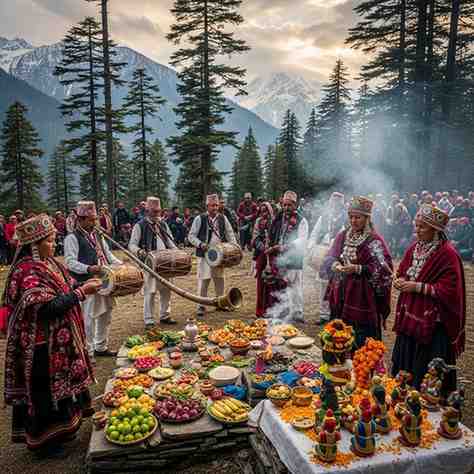
Raulane Festival of Himachal Pradesh: A Sacred Winter Tradition of Kinnaur
The Raulane Festival is one of Himachal Pradesh’s oldest winter traditions, deeply rooted in the spiritual and cultural life of the Kinnaur district. Celebrated annually, the festival symbolises the region’s intimate connection with its Himalayan belief systems, ancestral rituals, and community-led spiritual practices.
Origins and Spiritual Significance
At the heart of the Raulane Festival is the worship of Saunis , revered celestial beings believed to offer protection and warmth during the harsh winter months. The people of Kinnaur regard these divine guardians as essential to maintaining harmony, ensuring health, and guiding communities through the cold season. The festival reflects the district’s enduring oral traditions, where nature and spirituality blend seamlessly.
Unique Rituals and Symbolism
A standout feature of the celebration is the symbolic marriage of two men , representing a celestial couple. One serves as the Raula (groom) and the other as the Raulane (bride). Dressed in elaborate Kinnauri woollens, ornaments, and face coverings, they act as vessels for the Sauni spirits. Their slow, meditative movement through the Nagin Narayan Temple fills the ceremony with devotion and solemnity. The entire village participates, reinforcing community unity and respect for ancestral customs.
Preserving Cultural Identity
The Raulane Festival plays a crucial role in safeguarding Kinnaur’s cultural identity. Despite increasing modern influences, the community continues to uphold the ritual with authenticity and reverence. Growing social media interest has prompted appeals from locals to ensure respectful tourism.
Exam-Oriented Facts
-
Celebrated in Kinnaur district , Himachal Pradesh.
-
Dedicated to Saunis , celestial protectors.
-
Ritual features a symbolic union of two men acting as Raula and Raulane .
-
Main ceremonies held at the Nagin Narayan Temple with traditional masks and robes.
Month: Current Affairs - November 19, 2025
Category: Cultural festivals Himachal Pradesh